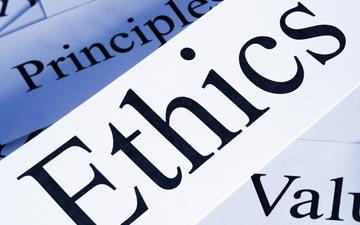
Ann Skeet is the senior director of Leadership Ethics at the Markkula Center for Applied Ethics. Views are her own.
Philosophers and ethicists were consulted when the Markkula Center for Applied Ethics developed its framework for ethical decision-making. I propose an additional source of standards for ethical decision-making that helps individuals and organizations make ethical choices: an organization’s mission statement.
One of the most underutilized assets in many organizations is the mission statement. It might not exist at all, or if it does, rarely be referenced. Missions are statements of purpose, a reason for being in existence. Some stand alone and others are accompanied by vision and values statements—aspirations for the future and beliefs that guide the work being done. Any of these foundational organizational documents can provide a source for ethical standards, in addition to those offered in the Ethics Center’s framework.
Why should this additional source be considered?
To begin with, mission defines success. Within the mission is a goal of some sort, a way to explain what is being done and why. But especially important are the clues that are offered about how an organization does something, and this aspect typically encompasses or expresses values. People in organizations with a clear, well-known mission can use it as one assessment of value alignment—do my personal values and the organization's line up? But even more importantly, they can use it to make decisions.
When decisions can be made quickly and consistently in organizations, strategy execution is better. This is simple and true. Taking a mission statement and changing it into a question or set of questions, as we do with the other philosophical approaches in the Ethics Center’s framework, provides one additional standard for determining what constitutes an ethical action in that organization. Values and vision statements offer other ways to consider additional standards.
I call this the Mission Approach. Mission matters. Companies that invest up front in their values and mission often cite that as some of the most important work they have done; current large enterprises that are household names today—like Google and Facebook—did just that in their early days. This was so clearly expressed by Jeff Weiner, LinkedIn CEO, upon the acquisition of his company by Microsoft. In his letter to employees he wrote:
Ten years ago, had you asked me about culture and values I would have rolled my eyes and recited a line from Dilbert. But when I started as CEO I began to appreciate just how important they were. Culture and values provide the foundation upon which everything else is built. They are arguably our most important competitive advantage, and something that has grown to define us. It's one thing to change the world. It's another to do it in our own unique way: Members first. Relationships matter. Be open, honest and constructive. Demand excellence. Take intelligent risks. Act like an owner.
That's who we are. That's LinkedIn.
I propose that at LinkedIn, in addition to the questions philosophers have posed over the ages, employees can use these questions to guide their thinking about ethical actions:
- Does this option keep our members as a priority?
- Does this option reinforce existing relationships?
- Does this option foster open, honest, and constructive communication?
- Does this option meet our standards for excellence?
- Is this option a worthwhile risk?
- Am I acting like an owner when I take this option?
That Weiner chose to share this reflection as his organization was being acquired is not insignificant. It brings me to the other name I give to this approach, which is the Systems Integration Approach. What does that mean (and couldn’t I just pick one name? Short answer, no.)
Beyond a framework for ethical decision-making, mission is also a framework for ethical system design, which is an attempt to bring behavioral science into organizational life to set up ways of working that aid people in behaving ethically. Good ethical design makes it easier to do the right thing.
Take the same questions developed to assess whether an option is ethical for a certain organization, like the list I developed above using LinkedIn’s mission, and use them as standards across the organization in all the functional areas that exist, such as human resources, sales, marketing, finance, and engineering. I liken this application to the way Michael Porter offered his competitive strategy wheel for organizations to check for strategic alignment across functions. Each part of the organization can ask if the product they are designing or the sales incentive plan they are implementing by way of examples, would hold up to these standards, derived from the company’s own mission.
We are in a time when societal norms are shifting quickly and dramatically, altering our understanding of what is considered acceptable, ethical behavior. And we are in a time when the accounts of executive missteps, fraud and other abuses of power are rampant. As organizations grow increasingly complex across industries and nations, there is much written and discussed about how hard it is to set and hold behavioral norms in global enterprises. I propose that it does not have to be so hard. It can be simpler. Mission matters.
Related Articles
How the U.S. Constitution Can Help Resolve Ethical Dilemmas
Matt Lauer is a Litmus Test for Every Workplace
